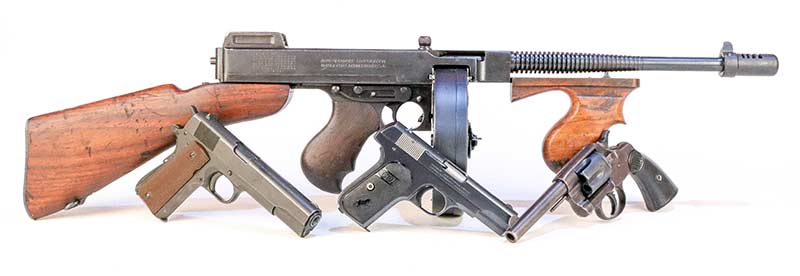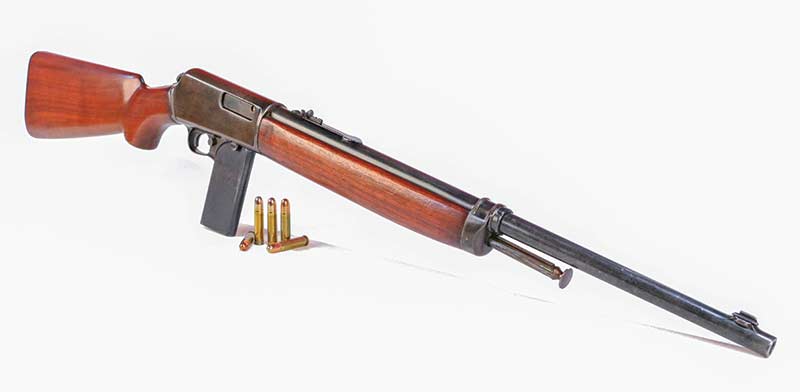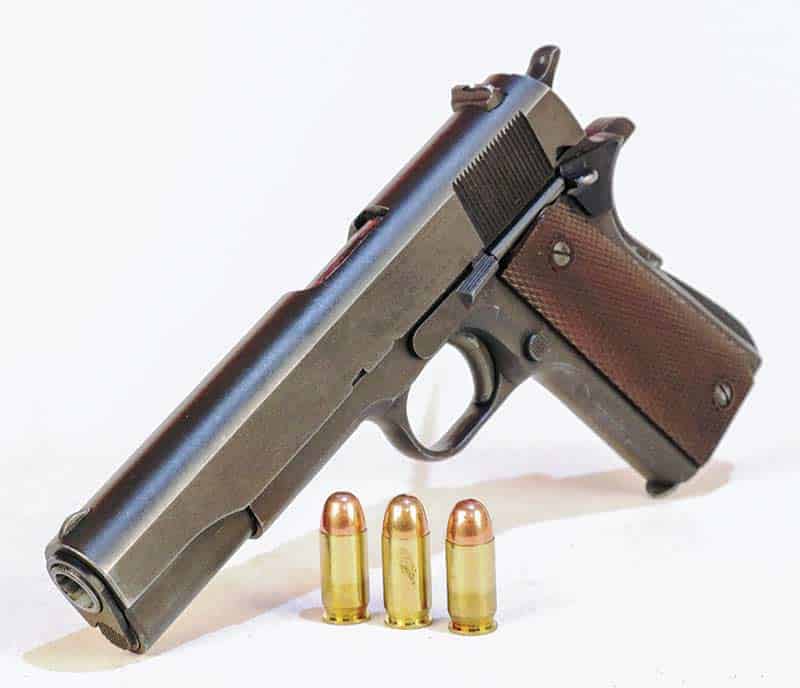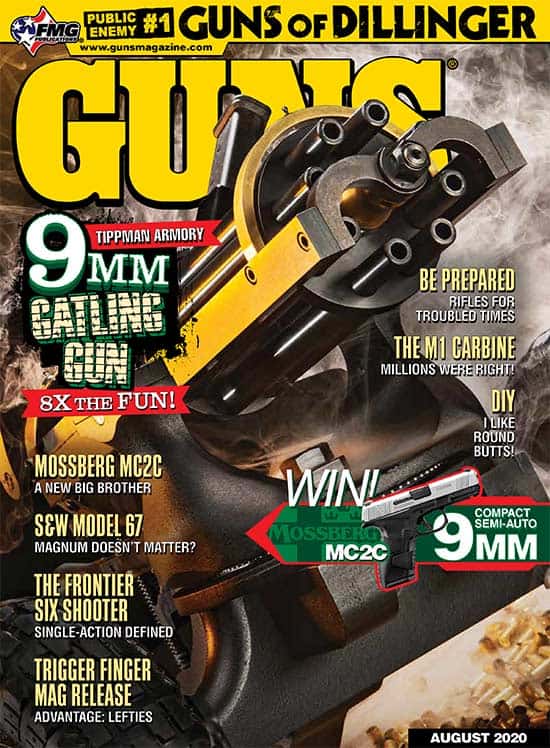Winchester M1907
The M1907 was a remarkably advanced blowback-operated semiautomatic rifle produced by Winchester between 1906 and 1958. Chambered for the intermediate .351SL round, the M1907 was a prescient design. Nearly four decades later the GI-issue M1 Carbine filled a similar tactical niche.
The M1907 sports beautiful workmanship and a variety of advanced features. The gun feeds from 5-, 10- or 20-round single-stack box magazines and is actuated via a plunger sticking out of the front of the forearm. John Dillinger’s supervillain sidekick Homer Van Meter used an M1907 to murder Patrolman Howard Wagner outside the Merchants National Bank in South Bend, Indiana, in June of 1934.
A San Antonio gunsmith named Hyman Lebman developed quite a following among Depression-era gangsters. His M1907 rifles included a muzzle-mounted compensator, a vertical foregrip taken from a Thompson submachine gun and a full auto conversion. John Dillinger, Homer Van Meter and Lester “Baby Face Nelson” Gillis all made trips to his Texas gun shop to stock up on firepower. Gillis, his wife, and Van Meter even took Thanksgiving dinner with the Lebman family. Lebman always insisted he thought his well-heeled customers were wealthy oil men with an interest in firearms.










